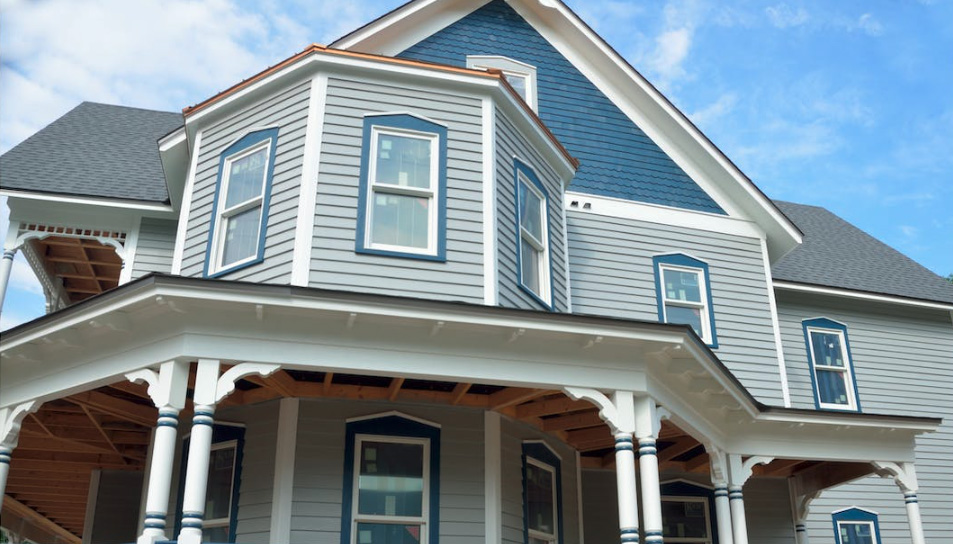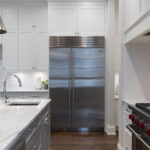Window Types & Window Construction Considerations

Photo credit: Pixabay
Windows are not just functional openings in a house that allow for airflow and natural light. They are also architectural elements that influence the aesthetics and energy efficiency of a home. From classic styles to modern innovations, the world of house windows is diverse and exciting. Whether you’re renovating, building a new home, or simply curious about the options available, this comprehensive guide will walk you through the various types of house windows, their features, and construction considerations.
Guide To Window Types & Styles
1. Single-Hung Windows
Single-hung windows include two sashes, but only the bottom one is operable, allowing it to slide vertically. They are simple, easy to maintain, and often budget-friendly. Their traditional design suits a wide range of architectural styles.
2. Double-Hung Windows
Like single-hung windows, double-hung windows have two operable sashes, both of which can be moved vertically. This allows for better ventilation control and easy cleaning, making them a popular choice for many homeowners.
3. Casement Windows
Casement windows feature a single sash hinged on one side, opening outward like a door. They provide superior ventilation and unobstructed views, making them ideal for capturing breezes and framing picturesque landscapes.
4. Awning Windows
Similar to casement windows, awning windows are hinged at the top and open outward. Their design helps keep rain out while allowing fresh air to flow in, making them suitable for use in various weather conditions.
5. Sliding Windows
Also known as gliding windows, sliding windows consist of two sashes, one of which slides horizontally over the other. They are simple to operate and provide a contemporary, streamlined look.
6. Picture Windows
Picture windows are designed to maximize views and natural light while providing a sleek appearance. These windows feature large, fixed glass panels, making them suitable for framing scenic vistas. Because they do not open and have no moving parts, they are energy-efficient and low-maintenance.
7. Bay Windows
Bay windows consist of three or more panels that project outward from the house. They create additional interior space and enhance both the interior and exterior aesthetics of a home.
8. Bow Windows
Bow windows are similar to bay windows but feature a gentle curve formed by four or more individual panels. They add a touch of elegance and a unique architectural element to a room.
9. Skylight Windows
Skylight windows are installed on the roof, which enables natural light to enter from above. They can transform dark spaces into bright, inviting areas and are a popular choice for attics, bathrooms, and kitchens.
10. Transom Windows
Transom windows are small, horizontal windows placed above doors or larger windows. They add visual interest, allow additional light to enter, and are often used to enhance the aesthetic appeal of entryways.
11. Garden Windows
Garden windows are small, protruding windows designed to create a greenhouse-like space for plants. They are typically installed above a kitchen sink and provide an ideal spot for herbs and other small plants.
12. Jalousie Windows
Jalousie windows consist of parallel glass slats set in a metal frame. They can be opened and closed simultaneously, allowing for excellent ventilation. While less common today, they were once a popular choice in warmer climates.
13. Clerestory Windows
Clerestory windows are placed high on a wall, usually above eye level, to allow natural light to enter without compromising privacy. They are often used in modern and contemporary architecture.
14. Palladian Windows
Palladian windows feature a large, arched center window flanked by smaller rectangular windows on each side. They are inspired by classical architecture and add a touch of grandeur to homes.
15. Round Windows (Oeil-de-Boeuf)
Round windows, also known as oeil-de-boeuf windows, are circular or oval-shaped windows that add a unique focal point to a room. They can be operable or fixed and are often used in historical or architectural styles.
16. Tilt and Turn Windows
Tilt and turn windows can be opened by tilting inwards at the top for ventilation or by swinging open like a door. They provide versatility and are popular in European designs.
17. Louvered Windows
Louvered windows consist of horizontally arranged slats that can be angled to control airflow. They are commonly used in tropical or coastal regions.
18. Combination Windows
Combination windows combine different types of window styles to create unique configurations that suit specific design preferences and functional needs.
19. Custom Shaped Windows
Custom shaped windows are tailored to fit unique architectural designs and can range from geometric shapes to artistic forms, allowing homeowners to express their creativity.
20. Impact-Resistant Windows
Impact-resistant windows are specially designed to withstand extreme weather conditions, making them ideal for hurricane-prone areas. They provide both safety and energy efficiency.
About Double- and Triple-Pane Windows
Double- and triple-pane windows are available in many of the styles listed above. The number of panes primarily refers to the number of layers of glass within the window, which can contribute to improved energy efficiency, sound insulation, and overall performance.
It’s important to note that while double and triple pane windows offer improved insulation, they may have a slightly larger frame to accommodate the additional glass layers. This can impact the overall appearance of certain window styles, especially those with smaller frames. Additionally, the availability of specific features, such as operability and hardware, may vary based on the manufacturer and style of the window.
When considering double or triple pane windows, it’s a good idea to work closely with a window professional or manufacturer to ensure that you choose the right style and configuration to meet your aesthetic preferences, energy efficiency goals, and overall design vision for your home.
Considerations When Choosing Windows
Style and Aesthetics: Consider the architectural style of your home and choose windows that complement its design. Different window styles can convey various aesthetics, from traditional to modern.
Functionality: Think about how you want your windows to function. Do you want them to open for ventilation? Consider options like casement, awning, or sliding windows. For fixed views, picture or clerestory windows may be suitable.
Energy Efficiency: Look for windows with high energy efficiency ratings. Double or triple pane windows, low-emissivity (Low-E) coatings, and insulated frames can help reduce energy consumption and utility bills.
Frame Material: Window frames come in various materials, including wood, vinyl, aluminum, and fiberglass. Each material has its own benefits and drawbacks in terms of aesthetics, maintenance, durability, and insulation.
Maintenance: Consider the level of maintenance required for the window material you choose. Wood frames may require more upkeep than vinyl or fiberglass.
Ventilation and Airflow: Determine how much ventilation you need in different areas of your home. Consider windows that allow for adjustable airflow, such as casement or tilt-and-turn windows.
Natural Light: Think about the amount of natural light you want in each room. Larger windows, such as bay or picture windows, can bring in more light, while smaller windows offer greater privacy.
Views: Consider the views from different rooms and choose windows that frame those views beautifully. Picture windows are often used for showcasing scenic vistas.
Privacy: Depending on your location and preferences, you may want windows that offer varying levels of privacy. Frosted or textured glass, as well as strategic placement, can enhance privacy.
Sound Insulation: If you live in a noisy area, sound insulation may be important. Windows with multiple panes and acoustic glazing can help reduce outside noise.
Security: Opt for windows with secure locking mechanisms and durable materials to enhance home security.
Climate Considerations: Choose windows that are suitable for your climate. Impact-resistant windows are ideal for hurricane-prone areas, while windows with good insulation are important for colder climates.
Budget: Set a budget for your window project and explore options within your price range. Keep in mind that high-quality, energy-efficient windows can provide long-term savings on energy bills.
Local Regulations: Check if there are any local regulations or building codes that dictate the type of windows you can install, especially in historic districts or areas prone to natural disasters.
Installation: Proper installation is crucial for the performance and longevity of your windows. Choose a reputable contractor or window professional to ensure a quality installation.
Warranty: Look for windows that come with a warranty, as this can provide peace of mind in case of defects or issues.
Long-Term Value: Consider the long-term value of your window investment. High-quality windows can enhance your home’s resale value and curb appeal.
Personal Preference: Ultimately, your personal preferences and lifestyle should guide your window choices. Take your time to explore different options and envision how they will enhance your living spaces.
Check out other home building and remodeling guides from Dwell Adore, including our roof shingles guide and siding types guide.
Home Gadgets & Appliances
- Choosing a Refrigerator: Door Layouts & Sizes

- Dishwasher Types: Benefits, Drawbacks & Considerations

- Washing Machine Guide: Which Is Best for You?

- Ultimate Guide to Blenders

Health & Wellness
- Resistant Starch Benefits, Foods & Types

- Types of Meditation: Finding Inner Peace & Clarity

- Quotes About Change & Life Transitions

- How to Stop Drinking Soda When You’re Addicted





